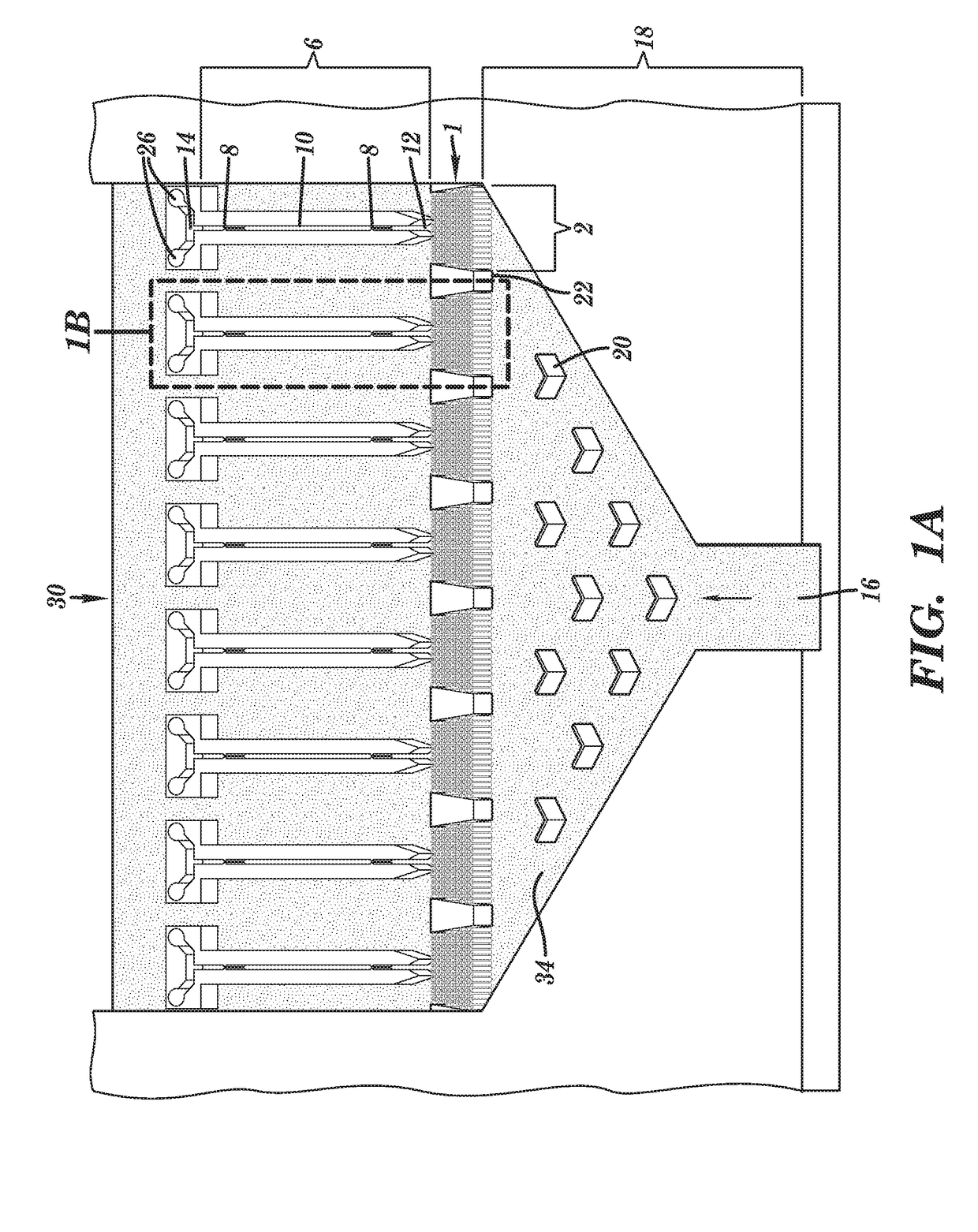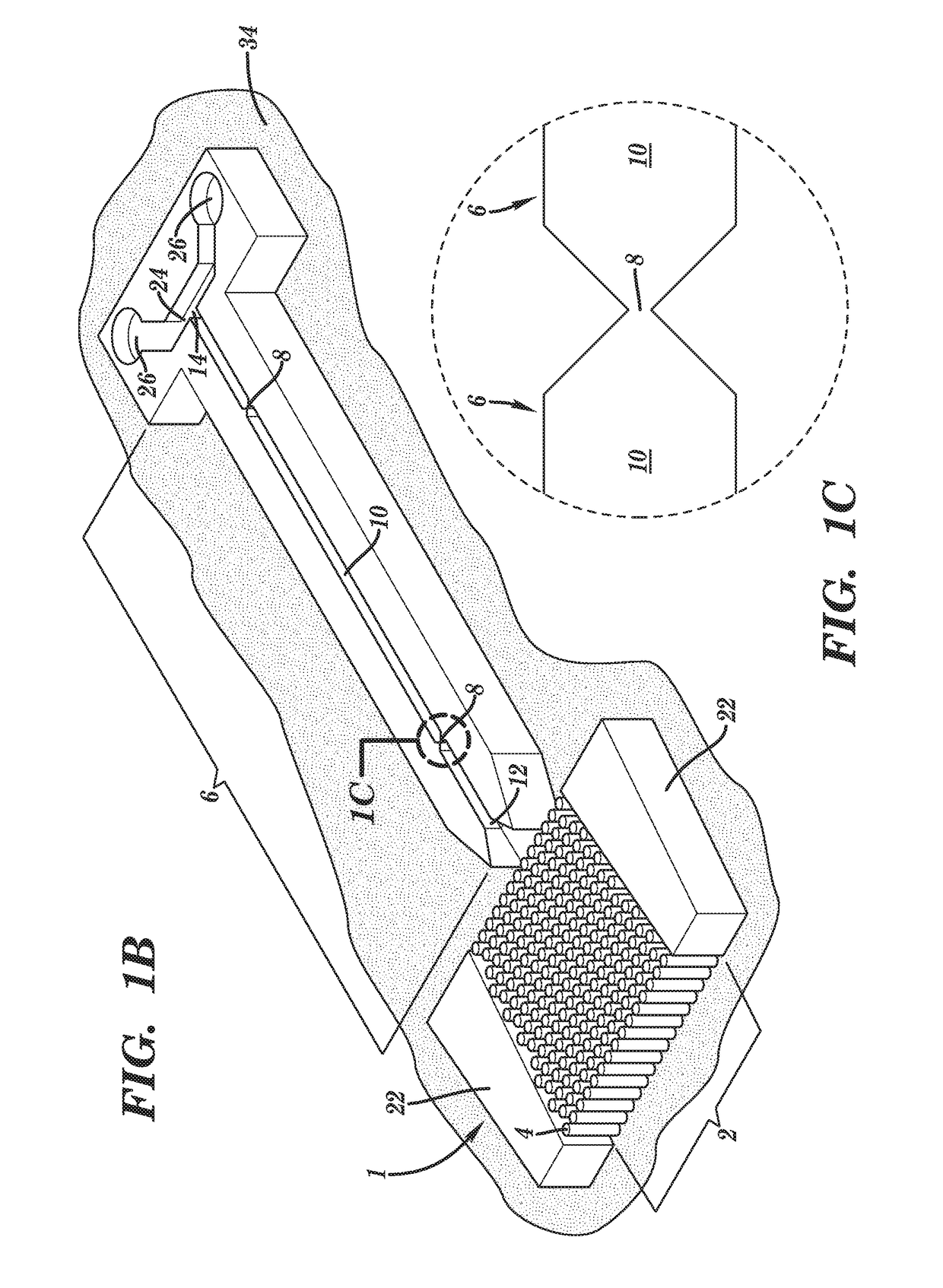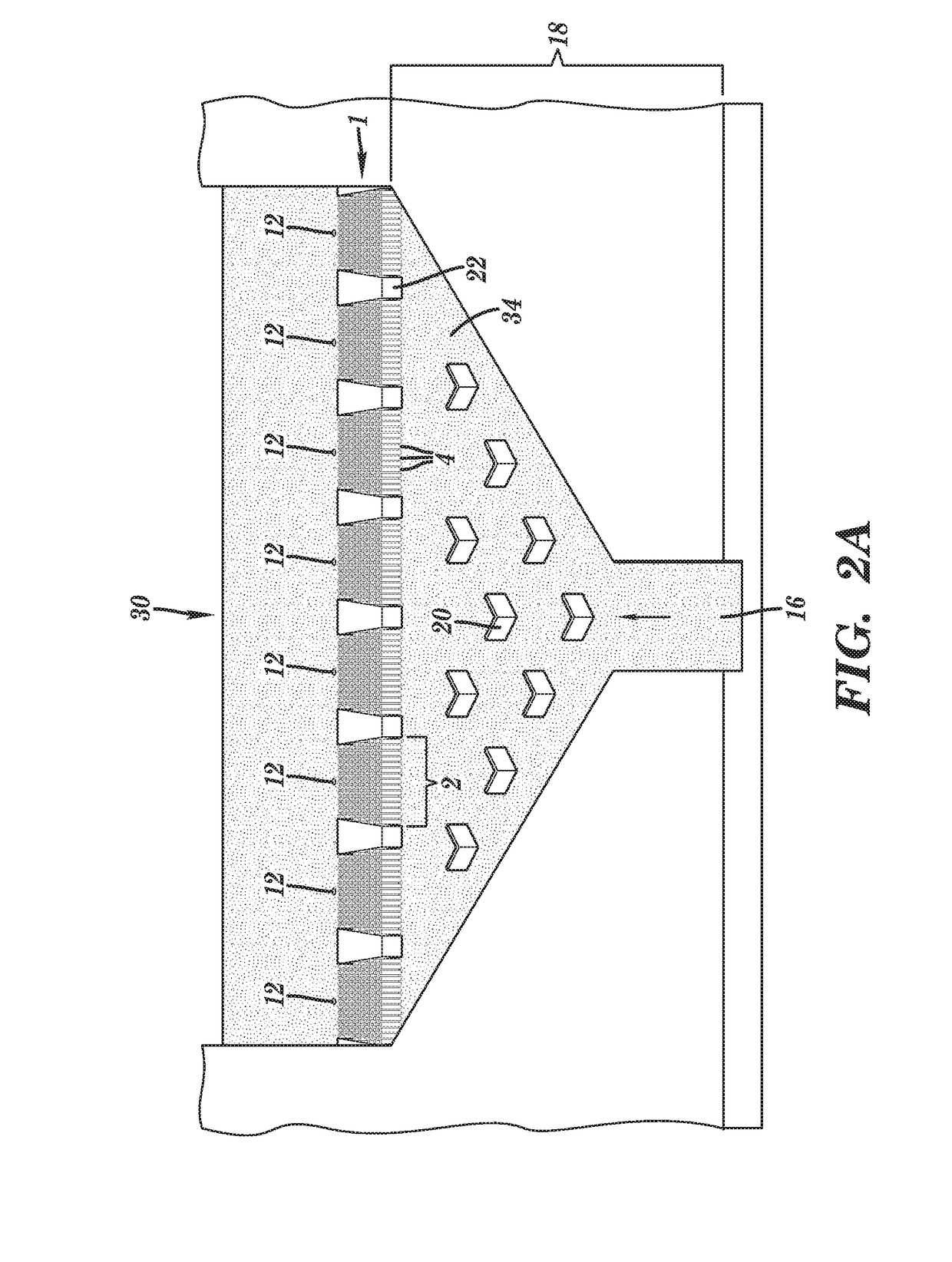Universal molecular processor for precision medicine
a molecular processor and precision medicine technology, applied in biochemistry apparatus and processes, laboratory glassware, instruments, etc., can solve the problems of increasing the importance and complexity of these tests, slow turnaround time, and high cost of the majority of these tests
- Summary
- Abstract
- Description
- Claims
- Application Information
AI Technical Summary
Benefits of technology
Problems solved by technology
Method used
Image
Examples
example 1
and Distinguishing Single Molecules in the Nanosensor Chambers of the uMPS
Simulation Data:
[0214]Preliminary simulations generated using COMSOL® simulation software have been performed on a nanosensor chamber comprised of 8 biomolecular processors each processor measuring 20×20 μm and containing 288 pillars (1 μm×5 μm with a 250 nm spacing). For these simulations, three operational questions were addressed: (1) can all biomolecular processors of a single chamber be uniformly addressed from a common input (reduces chamber footprint) hydrodynamically with no fluid moving into the nanotube; (2) what is the capture efficiency of the TdT-tailed DNA products to the surface immobilized dA30 primers; and (3) following thermal denaturation, could the products be efficiently directed into the nanotube sensors electrokinetically.
[0215]For pressure driven flow (see FIG. 31), inclusion of Chevron baffles into the pre-biomolecular processor area of the chamber distributes input fluid across the en...
example 2
oresis for Multiplexing
[0227]The identification of the solid phase LDR (spLDR) products and other oligonucleotide products produced as a result of the solid-phase reactions being carried out on the pillars of the bioreactor chamber is based on their length (bp), which will be accomplished using electrophoretic mobility matching. This allows for mobility multiplexing with the multiplexing power determined by the peak capacity (P) of the system (multiplexing here is defined as the number of mutations that can be identified in a single analysis cycle by using different LDR primer pairs).
[0228]To test the sensitivity of the darkfield microscope to visualize single silver nanoparticles (AgNPs) in a nannochannel, a stationary AgNP (60 nm) was imaged and its localized surface plasmon resonance (LSPR) was monitored. FIG. 40A shows a three-dimensional image of the resulting signal demonstrating high sensitivity. The intensity profile was constant over time, indicating a lack of bleaching. Ti...
example 3
ll Enumeration and Viability Assessment Using the Impedance Module
[0238]As described supra, the impedance module (also referred to as the sensor module) is used to count single cells, as well as determine cell viability and cell size. FIG. 42 shows single cell impedance measurements of breast cancer cells (MCF-7) using the three-layered impedance module as described herein (shown in FIGS. 23A-23B). MCF-7 cells were introduced to the microchannel of the impedance module via the input port and were measured as they individually passed through the pair of electrodes that intersect with opposing sides of the microchannel. Each peak in the graph of FIG. 42 represents a signature from a single cell with the amplitude related to the size of the cell. The impedance measurement was made at a frequency of 40 KHz.
[0239]Simulations, generated using COMSOL® software, were used to determine the effects of electrode size in the impedance module as a function of particle diameter to show that the r...
PUM
| Property | Measurement | Unit |
|---|---|---|
| Volume | aaaaa | aaaaa |
| Volume | aaaaa | aaaaa |
| Volume | aaaaa | aaaaa |
Abstract
Description
Claims
Application Information
 Login to View More
Login to View More - R&D
- Intellectual Property
- Life Sciences
- Materials
- Tech Scout
- Unparalleled Data Quality
- Higher Quality Content
- 60% Fewer Hallucinations
Browse by: Latest US Patents, China's latest patents, Technical Efficacy Thesaurus, Application Domain, Technology Topic, Popular Technical Reports.
© 2025 PatSnap. All rights reserved.Legal|Privacy policy|Modern Slavery Act Transparency Statement|Sitemap|About US| Contact US: help@patsnap.com



